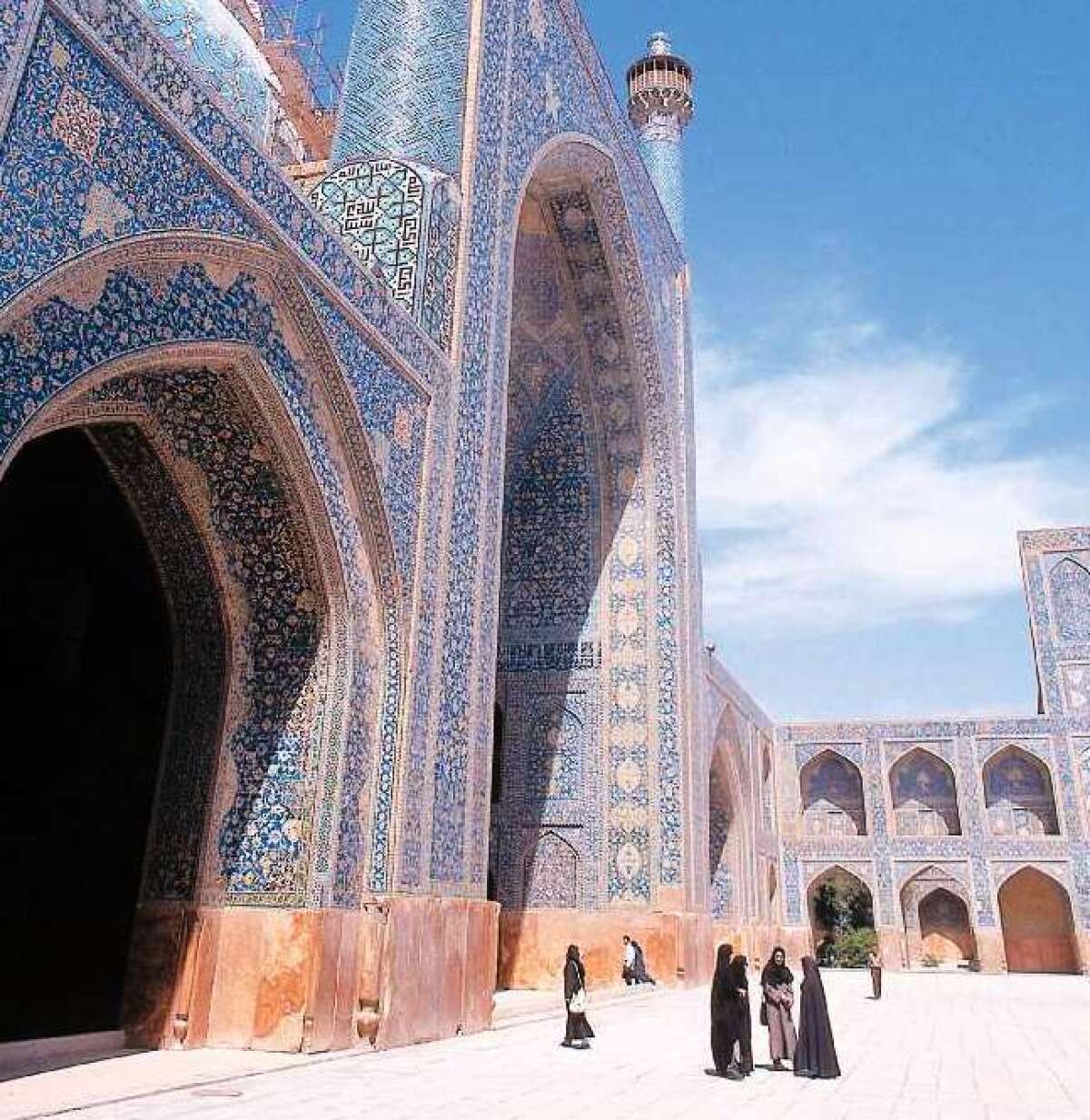Destroying cultural heritage sites is a war crime

- Share via
President Trump threatened to destroy 52 Iranian sites — “some at a very high level & important to Iran & the Iranian culture” — on Twitter on Saturday. This may seem like a small issue in the midst of an international crisis, but, as others have noted, his tweet amounts to an announcement of an intention to commit war crimes.
A part of the Hague Convention of 1907, signed over a century ago, says that “all necessary steps must be taken” to spare “buildings dedicated to religion, art, science, or charitable purposes, historic monuments, hospitals, and places where the sick and wounded are collected.” Similarly, the Geneva Convention Protocol I, signed in 1949 and amended in 1977, renders unlawful “any acts of hostility directed against the historic monuments, works of art or places of worship which constitute the cultural or spiritual heritage of peoples.”
Federal law in the United States says that violating these international conventions would constitute a war crime. Anyone who violates them could be imprisoned or, if death results from their actions, be sentenced to death. Members of the Trump administration should be on notice that they can be held liable under these provisions.
Trump’s threatened actions would be morally reprehensible even outside the law, because they would destroy centuries-old places of profound importance not just to Iranians, but to all of human civilization.
Measuring the significance of sites is always a delicate exercise. In the United States, we conduct a formal evaluation before we place a site on a list such as the National Register of Historic Places.
The worldwide list is the United Nations Educational, Scientific and Cultural Organization (UNESCO) List of World Heritage Sites. The United States has 24 places on UNESCO’s list, including Independence Hall, widely recognized as the birthplace of modern democracy and a symbol of hope for people around the world. The San Antonio Missions, Statue of Liberty and Mesa Verde National Park are also listed. It’s worth noting that many sites that we might think of as important to our national identity are not included on this international list. Not even Mount Vernon has made it, though President Washington’s home is one of 19 places nominated by the United States for consideration.
Iran, just one-sixth the size of the United States, also has 24 UNESCO designations and has nominated 56 more for consideration.
That country, recognized as a cradle of civilization, is home to World Heritage Sites like the Shustar hydraulic system, initiated in the fifth century B.C. and hailed by UNESCO as a “masterpiece of creative genius.” Also included as a group are eight Persian gardens whose distinct design influenced the Alhambra in Spain and the Taj Mahal in India and countless modern landscapes today.
But perhaps the most significant place on the UNESCO list is Persepolis, reportedly the most-visited historic site in Iran. It was a ceremonial capital of the Persian Empire, completed by Darius I and given a place of prominence in architectural history courses across the world. Some believe that Persepolis was the place where the clay Cyrus Cylinder (today housed at the British Museum) was inscribed in cuneiform. Recognizing the diversity of the Persian Empire, the cylinder sets forth a vision of governing a pluralistic society and is considered by some Iranians to be the world’s first charter of human rights.
A nation that willfully destroys another country’s heritage would be no better than the criminals who have destroyed irreplaceable sites in Syria, Afghanistan, Iraq and elsewhere in recent years.
Protecting civilian lives is paramount, but saving cultural sites is consistent with that mission, too. Destroying mosques, museums and libraries will certainly result in civilian casualties.
If President Trump’s rhetoric is a calculated attempt to pressure Iranian citizens to topple their regime, it seems likely to backfire. Imagine how Americans would respond if a foreign power threatened to fire missiles at the Statue of Liberty. If he follows through on his threat, he will violate international law and the United States will risk further damage to its increasingly fragile global reputation.
Sara C. Bronin is a lawyer and specialist in historic preservation.
More to Read
A cure for the common opinion
Get thought-provoking perspectives with our weekly newsletter.
You may occasionally receive promotional content from the Los Angeles Times.









